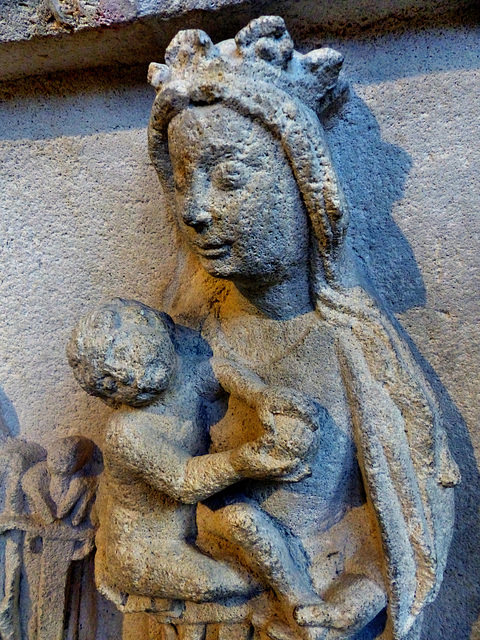Plouha - Chapelle de Kermaria-an-Iskuit
Santo Domingo de la Calzada - Cathedral
Assisi - Cattedrale di San Rufino
Ivrea - Duomo di Santa Maria
Palermo - La Magione
Coimbra - Machado de Castro National Museum
Coimbra - Machado de Castro National Museum
Acquarossa - San Carlo di Negrentino
Abbazia di Chiaravalle di Fiastra
Matera - Santa Lucia alle Malve
Salerno - Cattedrale di Salerno
Salerno - Museo Diocesano San Matteo
Conca dei Marini - San Michele
Napoli - Complesso Monumentale Donnaregina
Napoli - Complesso Monumentale Donnaregina
Napoli - Complesso Monumentale Donnaregina
Minturno - San Pietro Apostolo
L'Aquila - Museo nazionale d'Abruzzo
L'Aquila - Museo nazionale d'Abruzzo
L'Aquila - Museo nazionale d'Abruzzo
L'Aquila - Museo nazionale d'Abruzzo
Burgos - Catedral de Burgos
Location
See also...
See more...Keywords
Authorizations, license
-
Visible by: Everyone -
All rights reserved
-
276 visits
Burgos - Cathedral


The construction of the cathedral was ordered by King Ferdinand III of Castile and Mauricio, the Bishop of Burgos. Ferdinand had just married Barbarossa´s granddaughter Beatrice of Swabia (aka "Elisabeth of Swabia") and wanted a cathedral, reflecting his new role in the European power game.
The former Romanesque cathedral got demolished and on July 20, 1221, the construction of the new Gothic started under the guidance of an unknown French architect. After nine years, the chevet was completed and the high altar was consecrated. Then the construction stopped for about 200 years.
Attending the Council of Basel (aka "Council of Florence") in 1435 bishop (and diplomat) Alfonso de Cartagena saw the just completed, elegant towers of the Basel Minster. When he returned to Burgos he was accompanied by German architect Johannes von Köln (aka "Juan de Colonia"), who probably knew the blueprints of the towers, planned for the Cathedral of Cologne. Under his guidance the towers of the Cathedral were completed in open tracery. He was followed on the construction site by his son Simon de Colonia. Francisco de Colonia, Simon´s son, continued the work and created the Pellejería-Portal. This was a family business.
Virgin Mary holding infant Jesus. Jesus acts like a very hungry breast-fed baby.
This sculpture can be seen in the context of a "Nursing Madonna" (aka "Madonna Lactans", "Maria lactans"). These icons were popular from the 14th century on.
The former Romanesque cathedral got demolished and on July 20, 1221, the construction of the new Gothic started under the guidance of an unknown French architect. After nine years, the chevet was completed and the high altar was consecrated. Then the construction stopped for about 200 years.
Attending the Council of Basel (aka "Council of Florence") in 1435 bishop (and diplomat) Alfonso de Cartagena saw the just completed, elegant towers of the Basel Minster. When he returned to Burgos he was accompanied by German architect Johannes von Köln (aka "Juan de Colonia"), who probably knew the blueprints of the towers, planned for the Cathedral of Cologne. Under his guidance the towers of the Cathedral were completed in open tracery. He was followed on the construction site by his son Simon de Colonia. Francisco de Colonia, Simon´s son, continued the work and created the Pellejería-Portal. This was a family business.
Virgin Mary holding infant Jesus. Jesus acts like a very hungry breast-fed baby.
This sculpture can be seen in the context of a "Nursing Madonna" (aka "Madonna Lactans", "Maria lactans"). These icons were popular from the 14th century on.
- Keyboard shortcuts:
Jump to top
RSS feed- Latest comments - Subscribe to the comment feeds of this photo
- ipernity © 2007-2024
- Help & Contact
|
Club news
|
About ipernity
|
History |
ipernity Club & Prices |
Guide of good conduct
Donate | Group guidelines | Privacy policy | Terms of use | Statutes | In memoria -
Facebook
Twitter

Sign-in to write a comment.